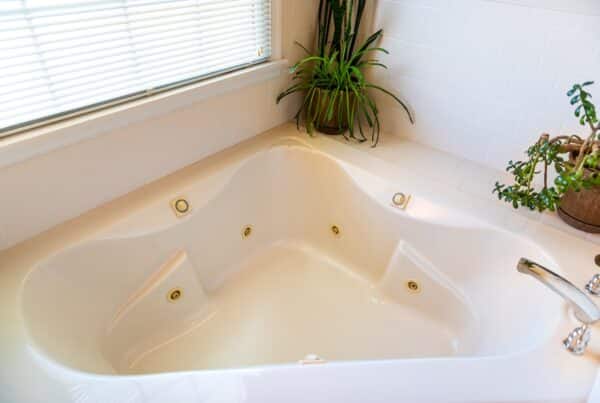
Have you ever walked into your home and felt a sudden, uncomfortable stickiness or noticed your skin feeling unusually dry? These could be signs that the humidity levels are off balance – but keeping a house within the ideal range isn’t just about comfort. Proper humidity levels can protect your home’s structure, and even improve your health.
Since it’s hard to adjust what you don’t know, this post will highlight the ideal humidity range for a home. You’ll also learn why it matters and how you can maintain healthy humidity levels in your living spaces.
Why Indoor Humidity Matters
Maintaining the right humidity levels in your home is crucial for several reasons, but we’ll start with your health and safety. High humidity levels can foster mold, dust mites, and bacteria, triggering allergies and asthma. It can also lead to excessive sweating and general discomfort.
Additionally, high humidity can cause wood to warp and paint to peel. More importantly, it promotes mold growth, which can damage walls, ceilings, and floors.
Conversely, low humidity can dry out your nasal passages, skin, eyes, and throat, increasing the risk of colds and respiratory infections or irritation. Low humidity can also lead to cracking wood and brittle furniture.
Finally, extreme humidity levels in either direction can affect the performance and lifespan of electronic devices, causing malfunctions or damage.

What Should the Humidity Level Be in Your House?
Experts, including those from the Environmental Protection Agency (EPA), recommend maintaining indoor humidity levels between 40% and 60%. This range is optimal for comfort, health, and preserving your home’s structure.
Keeping humidity within this range ensures the air is not too dry, which can cause skin irritation and respiratory problems, nor too moist, which can foster mold growth and structural damage. A balanced humidity level promotes overall well-being and helps protect your home and belongings from damage.
Factors Affecting Indoor Humidity
Several factors can influence the humidity levels inside your house:
- External Weather Conditions: Outdoor humidity levels and temperature significantly impact indoor humidity. In humid climates or during rainy seasons, indoor humidity tends to increase. Conversely, during dry, cold winters, indoor humidity levels can drop.
- Household Activities: Everyday activities such as cooking, showering, and doing laundry add moisture to the air. These activities can raise indoor humidity, especially if proper ventilation is not maintained.
- HVAC Systems: Heating, ventilation, and air conditioning (HVAC) systems play a crucial role in controlling indoor humidity. Air conditioners and dehumidifiers reduce humidity by removing moisture from the air, while humidifiers add moisture when the air is too dry.
- Home Insulation and Ventilation: Proper insulation and ventilation help regulate humidity levels. Insulation prevents outdoor humidity from entering the home, while good ventilation allows excess moisture to escape, preventing it from accumulating indoors.
- Leaks and Water Intrusion: Leaky roofs, walls, or plumbing can introduce unwanted moisture into your home, raising humidity levels and potentially causing water damage and mold growth.
- Indoor Plants: While plants can help improve air quality, they also release moisture into the air through a process called transpiration. A large number of indoor plants can increase humidity levels in your home.
How to Measure the Humidity of a House
The most reliable way to measure indoor humidity is with a hygrometer. This device is easy to use and can be found in both digital and analog versions. Place the hygrometer in different rooms to get an overall sense of your home’s humidity levels. Aim to check readings regularly to ensure they stay within the ideal range.
Besides using a hygrometer, pay attention to physical signs of humidity imbalance. Condensation on windows, a musty smell, or noticeable static electricity can indicate that your humidity levels are off. Dry skin and respiratory discomfort can also be clues to low humidity.
Finally, some modern thermostats and smart home systems come equipped with humidity sensors. These devices can give you real-time data on your home’s humidity levels and often allow you to set alerts if levels go outside the desired range.
Practical Tips for Managing Humidity Levels
Here are practical tips to manage your home’s humidity, depending on where you’re currently landing.
Reducing High Humidity
- Use Dehumidifiers: These devices are designed to remove excess moisture from the air. Place dehumidifiers in areas prone to high humidity, like basements and bathrooms.
- Air Conditioning: Air conditioners naturally dehumidify as they cool the air. Ensure your AC unit is properly maintained and functioning efficiently.
- Ventilation: Proper ventilation is crucial. Use exhaust fans in bathrooms and kitchens to remove moisture from cooking and showers. Opening windows can also help, especially in less humid weather.
- Fix Leaks: Inspect your home for any leaks in the roof, walls, or plumbing. Addressing these issues promptly will prevent moisture from accumulating.
- Improve Insulation: Proper insulation can prevent moisture from entering your home, especially in areas prone to condensation like basements and attics.
Increasing Low Humidity
- Humidifiers: Humidifiers add moisture to the air, which is particularly useful during dry winter months. Portable humidifiers can be moved to different rooms as needed.
- Indoor Plants: Plants release moisture through a process called transpiration. Adding a few houseplants can naturally increase humidity levels.
- Water Features: Simple solutions like placing bowls of water near heating sources or using a water fountain can add moisture to the air.
- Air-Dry Laundry: Drying clothes indoors on a rack instead of using a dryer can add humidity to the air.
- Boiling Water: Boiling water on the stove or leaving a pot of water to simmer can increase indoor humidity. This is a quick and easy way to add moisture to the air.

Other Recommended Maintenance
In addition to managing humidity levels, several maintenance tasks can help keep your home comfortable and in good condition. Regularly clean and replace HVAC filters to ensure efficient operation and good air quality.
Check and seal any gaps or cracks around windows and doors to improve insulation and prevent unwanted moisture from entering. Schedule annual inspections of your HVAC system to identify and fix potential issues before they become major problems.
Lastly, consider using a programmable thermostat to better control your home’s temperature and humidity levels, ensuring a consistent and comfortable environment year-round.
When to Call a Professional
There are times when managing humidity levels may require professional help. If you notice persistent issues like mold growth, musty odors, or condensation on windows despite your efforts, it’s time to call in a professional.
Additionally, if your HVAC system isn’t effectively controlling humidity or if you suspect leaks or water damage, professional assessment and repair are essential. Professionals can provide thorough inspections, identify underlying problems, and offer solutions tailored to your situation.
Conclusion
Keeping your humidity in the sweet spot of 40% to 60% isn’t just a comfort issue—it’s a game-changer for your health and house. Managing humidity levels can prevent mold growth, avoid respiratory problems, and protect your home’s structure and electronics.
Regularly check humidity with a hygrometer, fix leaks, ensure proper ventilation, and use humidifiers or dehumidifiers as needed. If persistent problems occur, don’t hesitate to call in the pros – in Clermont, FL, and surrounding areas, call Atkinson Inspection Services today.



